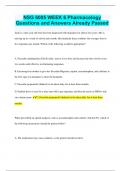Samenvatting
Summary of politics of migration and diversity GMD year
It's a summary of all the themes, theories/authors we dicussed during politics of migration and diversity course of GMD class . It includes 8 weeks of classes. I used it for the exam and got a nice grade.
[Meer zien]













